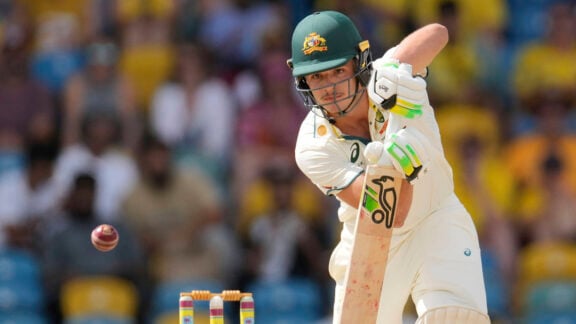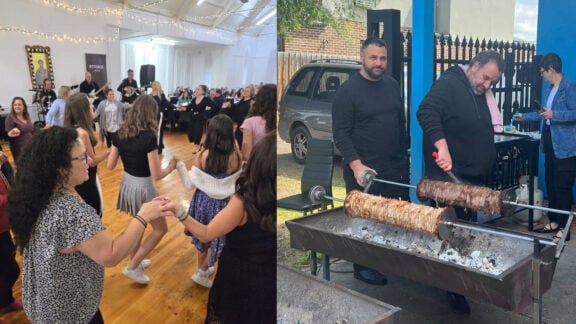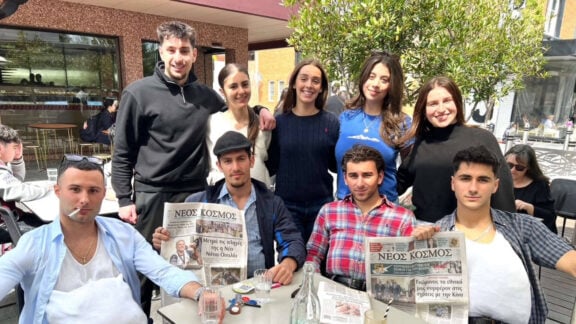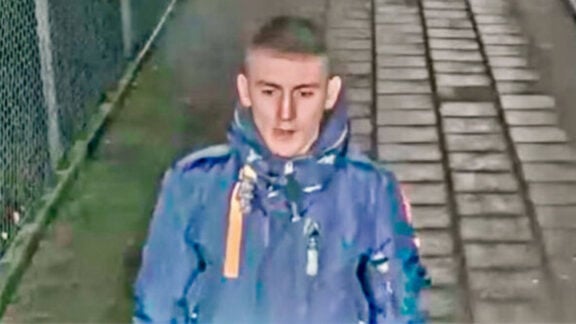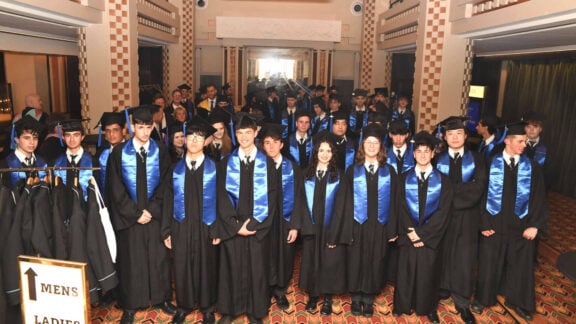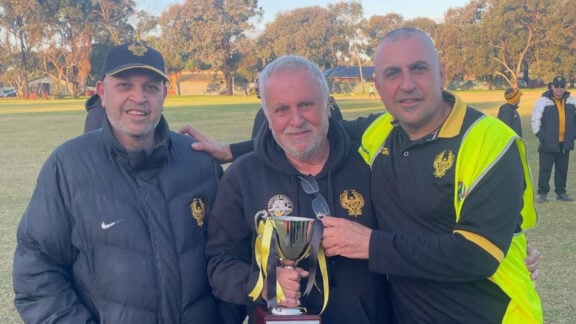It was standing room only in the Strangers’ Room of Parliament House of NSW for the function of the Consulate-General for the 195th anniversary of the War of Independence. Speakers were NSW Premier Mike Baird MP, the Leader of the Opposition Luke Foley MP and Consul-General Dr Stavros Kyrimis.
Among the audience was a large number of parliamentarians of all parties, including Eleni Pettinos MP (Liberal; Miranda), Sophie Cotsis MLC (ALP), Courtney Houssos MLC (ALP) and Steve Kamper (ALP; Rockdale), along with Philhellenes David Elliott (Minister for Veterans’ Affairs and chair of the NSW-Hellas Parliamentary Friendship Group), David Clarke MLC (Liberal) and the Rev. Fred Nile MLC (Christian Democrats).
The simple celebration included an orchestral ensemble and the Greek Orthodox Christian Society Choir, who performed the songs Exodus from Messolonghi, 40 Pallikaria, Poune ta Hronia and Aprili mou.
Rabbi Dr Dovid Slaven and Mr Amir Salem, from Alexandria, Egypt, flawlessly performed MC duties, informing the assembly about the Hellenic War of Independence (1821-1829), about the first Hellenes of Australia who were fighters in the war, and about the diachronic contributions of Hellenic civilisation through democracy, literature and the arts.
The highlight of the event was the announcement by the consul-general that the Australian Hellenic community of Sydney is preparing 400 marble plaques with bilingual inscriptions related to Hellenism and Anzac.
As 2016 marks the Centenary of the Anzacs on the Macedonian Front (1916) and the 75th anniversary of the 1941 Greek Campaign, the plaques are another marker of the Hellenic-Anzac relationship.
They are replicas of an inscription of a war memorial of the ancient Athenians, erected in 447BC to the memory of their fallen during expeditions to the Thracian Chersonese – modern Gallipoli. The stele bears the names of the fallen hoplites and the following inscription:
ΗΟΙΔΕΠΑΡΗΕΛΛΗΣΠΟΝΤΟΝΑΠΟΛΕΣΑΝΑΓΛΑΟΝΗΕΒΕΝΒΑΡΝΑΜΕΝΟ
ΙΣΦΕΤΕΡΑΝΛΕΥΚΛΕΙΣΑΜΠΑΤΡΙΔΑΙΟΣΤΕΧΟΡΟΣΣΤΕΝΑΧΕΜΠΟΛΕΜΟΘ
ΕΡΟΣΕΚΚΟΜΙΣΑΝΤΑΣΑΥΤΟΙΣΔΑΘΑΝΑΤΟΝΜΝΕΜΑΡΕΤΕΣΕΘΕΣΑΝ
[Doing battle beside the Hellespont these men lost their shining youth. They brought honour to their homeland, so that the enemy groaned as it carried off the harvest of war, and for themselves they set up a deathless memorial of their courage.]
Under the leadership of the Hellenic Village organisation (formerly the Federation of Hellenic Philanthropic Associations, under the presidency of John Kallimanis), 400 replicas in marble will be installed in public spaces across New South Wales: museums, clubs, public service offices, and schools.
The stele once stood in the section of the ancient Kerameikos Cemetery, towards Akademias Platonos Street, north of the present-day Church of the Holy Trinity. That space was the military cemetery of ancient Athens, known as the ‘Demosion Sema’. It has been at the National Epigraphic Museum in Athens since 1881.
In 1932 the Australian poet and Classical Greek scholar Christopher Brennan brought the original inscription to the attention of his friend, solicitor Robert Innes Kay. Kay then brought it to the attention of Australian Official Historian CEW Bean.
All three men immediately recognised how apt this ancient Hellenic inscription related to the Anzacs – young men fighting and dying on the same strip of ground more than 2,400 years apart.
John Treloar, director of the Australian War Memorial (then under construction), arranged to have a plaster cast of the inscription made through the offices of Lieutenant Colonel Cyril Hughes. He worked with the Imperial War Graves Commission in the Eastern Mediterranean.
Initially Hughes acquired a ‘squeeze’ – an impression made of thick paper. However, as this would not make a satisfactory display item, Treloar asked him to acquire a plaster cast for the memorial.
In November and December 1935, a plaster cast was made and received by the memorial in February 1936. It was initially housed in Melbourne and later in Sydney. It was not displayed in the memorial’s permanent building in Canberra until 1954.
The cast was on display in the Australian War Memorial’s Hall of Valour for some time, but has since been set into a wall in the administration area of the memorial complex, out of the public view.
Through the Hellenic Village organisation under the presidency of John Kallimanis, this neglected aspect of Hellenism in the Antipodes is returning to the light.


